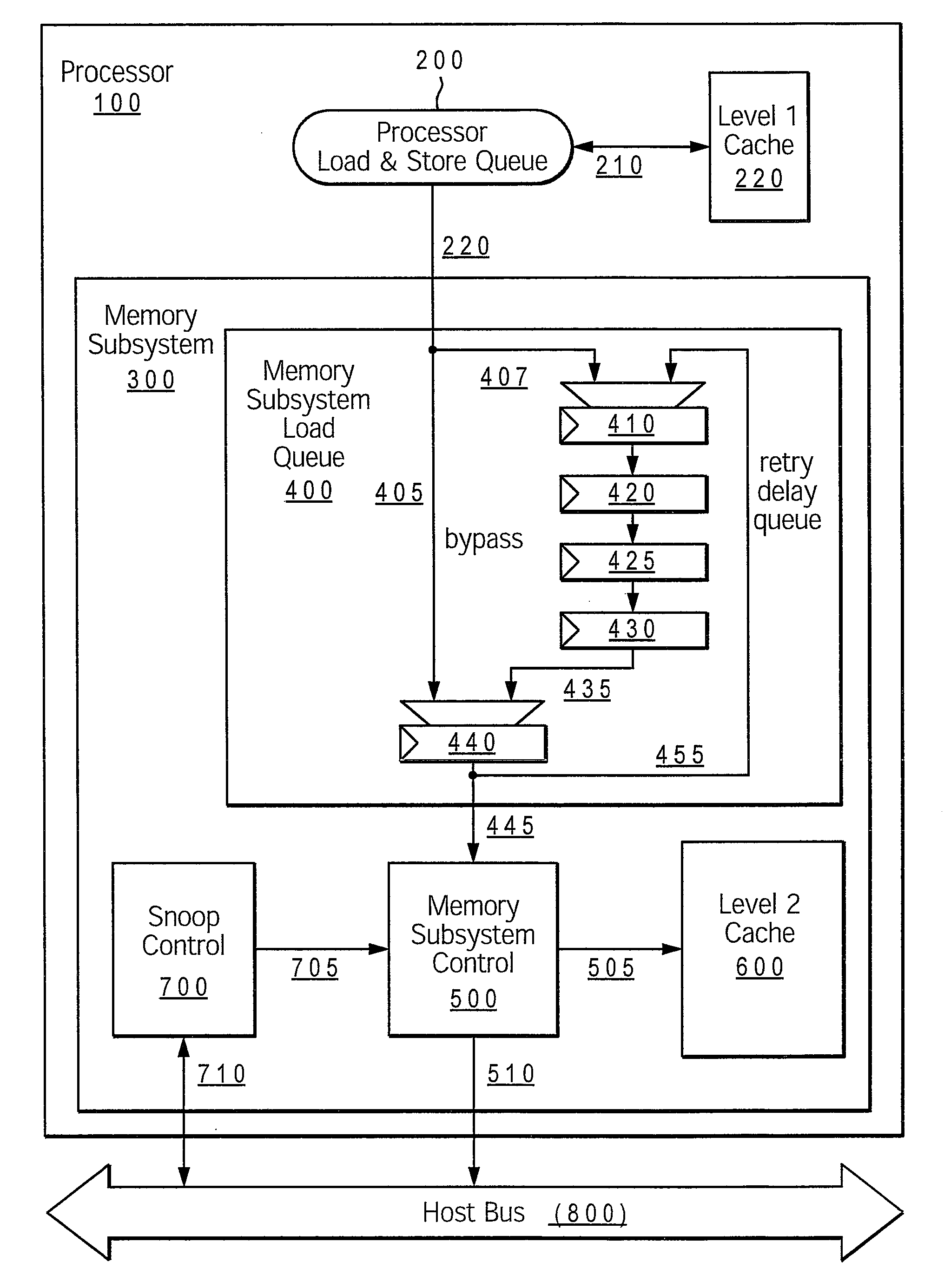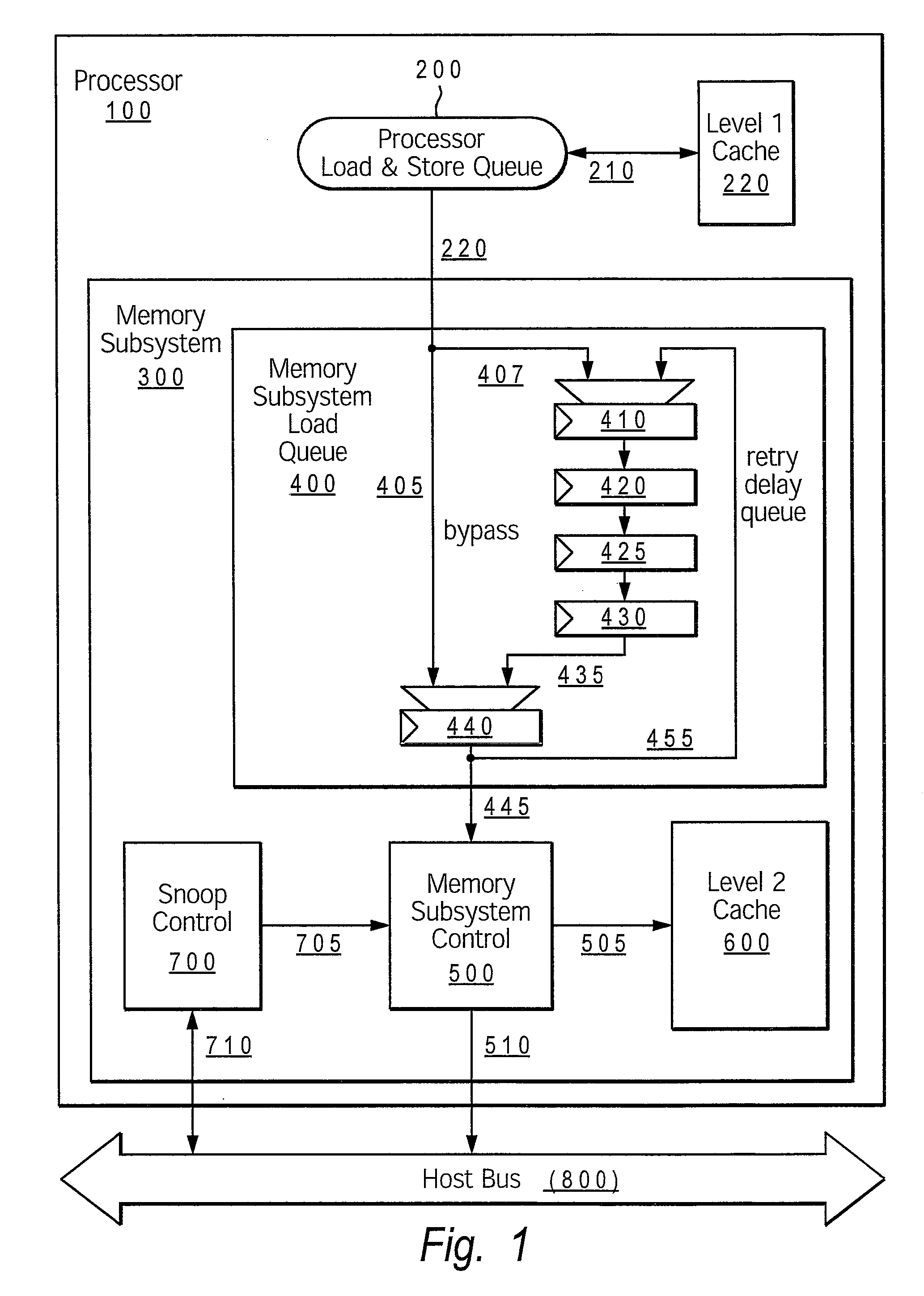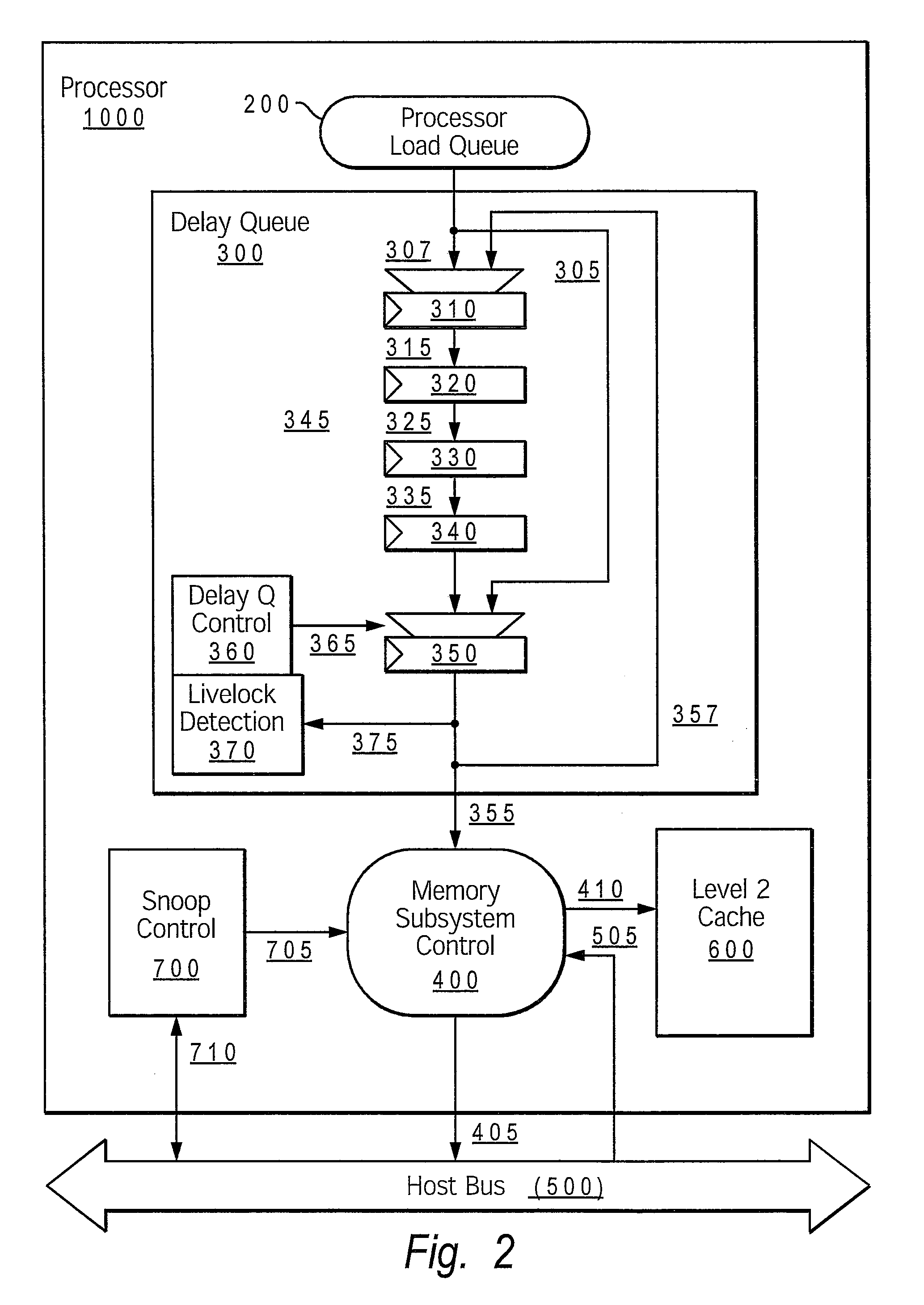Structure for dynamic livelock resolution with variable delay memory access queue
- Summary
- Abstract
- Description
- Claims
- Application Information
AI Technical Summary
Problems solved by technology
Method used
Image
Examples
first embodiment
[0047]Turning now to the figures, FIG. 2 shows an example processing system configured with a livelock detection mechanism that provides the delay queue bypass disable method for resolving livelocks, according to the present invention. The processing system comprises processor core 1000, which includes processor load queue 200, delay queue 300 memory subsystem controller 400, snoop controller 700 and level 2 cache 600. Snoop controller 700 and memory subsystem controller 400 connect via respective paths 710 and 405 to host (or system) bus 500. Other memory structures within a memory subsystem (not shown) are connected to processor 1000 via host bus 500.
[0048]Delay queue 300 comprises delay path 345, which includes a series of delay stages 310, 320, 330, 340 (provided by latches), and final stage 350. Both first stage 310 and final stage 350 have an input MUX, utilized to select one of multiple possible inputs to the particular stage, as described below. Delay queue 300 also comprise...
second embodiment
[0051]FIG. 3 shows an example processing system configured with a livelock detection mechanism that provides the single step instruction method for resolving livelocks, according to the present invention. Structurally, FIG. 3 differs from FIG. 2 because of the inclusion of paths 306, 307 and 308 in FIG. 3. The livelock detection and resolution mechanisms may overlap with those illustrated within FIG. 2, and may also include additional / different functional logic to enable the variations of single step delay associated with the present method.
[0052]FIG. 3 shows how delay queue control 360 may also serve as instruction single step control as an alternative livelock breaking method. A livelock condition caused by snoop requests 705 from external bus 500 colliding with processor memory access requests 355 typically require adjustments beyond that of subtle sequencing modifications. When repeated collisions are not solved by the delay bypass disable mechanism (shown in FIG. 2), delay queu...
PUM
 Login to View More
Login to View More Abstract
Description
Claims
Application Information
 Login to View More
Login to View More - R&D
- Intellectual Property
- Life Sciences
- Materials
- Tech Scout
- Unparalleled Data Quality
- Higher Quality Content
- 60% Fewer Hallucinations
Browse by: Latest US Patents, China's latest patents, Technical Efficacy Thesaurus, Application Domain, Technology Topic, Popular Technical Reports.
© 2025 PatSnap. All rights reserved.Legal|Privacy policy|Modern Slavery Act Transparency Statement|Sitemap|About US| Contact US: help@patsnap.com



